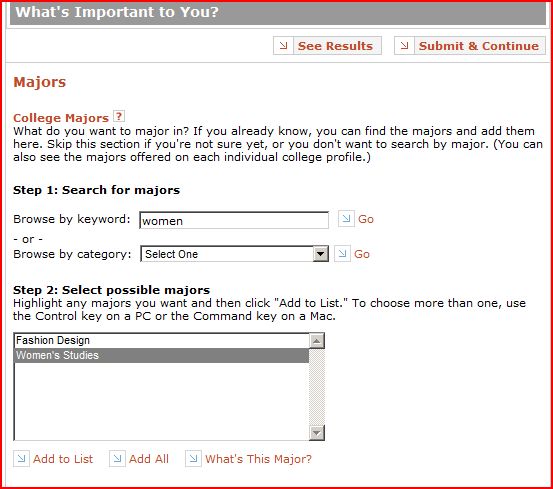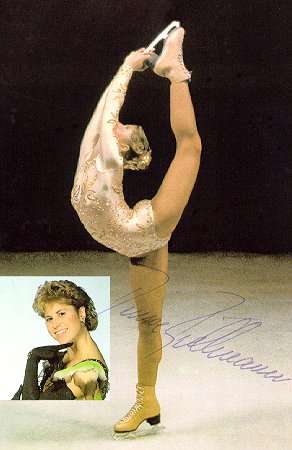Crossposted at Jezebel.
Ajax was searching for majors on College Board, a website aimed at helping people get into and through college. She wanted to search for colleges with women’s studies majors and when she typed “women” into the keyword field, the search function returned two majors: women’s studies and fashion design.
This would make perfect sense if the search function returned only women’s studies since it has “women” in the name and all. But fashion design? It suggests that somehow fashion design has been marked as a major-for- or about-women, but no other major has.
What about, say, history? Nope, no women in that.
Psychology? Well, there is a Psych of Women class. But, otherwise no.
Economics? Don’t make me laugh!
Queer Studies? Afro-Am? Wait? Women are gay!? And black!?
Politics? Oh honey, don’t worry your pretty little head about it!
Literature? Oh yeah! We forgot literature! Let’s slap a “women” tag on that one and call it a day.
UPDATE: Brenden L. went to the website and typed in men. Guess what he got?

Lisa Wade, PhD is an Associate Professor at Tulane University. She is the author of American Hookup, a book about college sexual culture; a textbook about gender; and a forthcoming introductory text: Terrible Magnificent Sociology. You can follow her on Twitter and Instagram.




